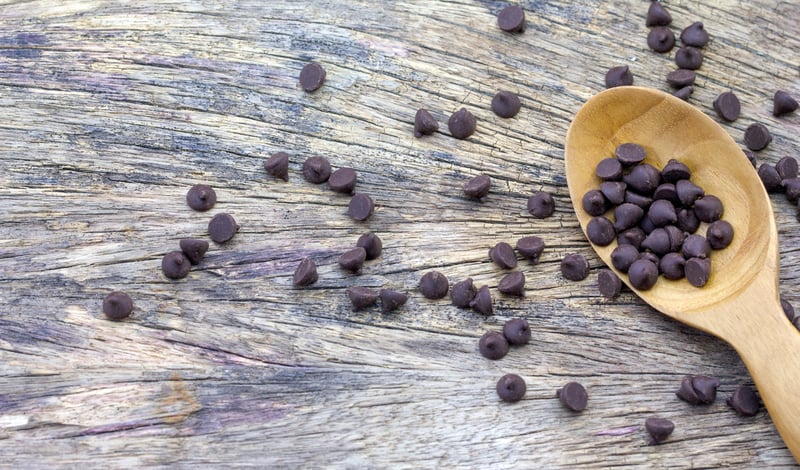Is the 5-Second Rule Real (or safe)? Here are the Facts

Whether because of fumbling fingers, rushing out the door, tripping, or a heavy gust of wind, all of us have dropped a delicious morsel of food onto the ground at one time or another. But if it hit for mere seconds, many of us dust the food off, give it a quick look to make sure it isn’t covered with dirt, hair, or worse before popping it in our mouths without a thought. After all, the 5-second rule suggests the food remains perfectly fine. Others may look on in disgust, asking, “Did you really eat food that had hit the floor?”
If you would pick it up, you aren’t alone. According to one survey, 87% of people say they will (or have) eaten food that’s hit the floor; 81% say they follow the 5-second rule. 1
Have you ever wondered, though, if the 5-second rule is real? And where did it come from?
What is the 5-Second Rule?
The time varies from 1 to 3 to 5 to 10 seconds, but the concept is that as long as the food is picked up quickly, it’s safe to eat. This idea is attractive because it prevents you from throwing away good food. And some people have even suggested that getting some floor spice is good for activating immune systems—as long as we don’t get ill.
The original “rule” is often attributed to Genghis Khan, who allowed his generals to eat food that fell to the floor, for as long as Khan allowed, because the food prepared for the ruler was so special. Of course, at that time, no one had even heard about microorganisms (e.g., viruses, parasites, and bacteria) and how they can contribute to illness. Thus, you only needed to wipe off the visible dirt, and you were good to go.
In more modern times, Julia Child helped ingrain this myth by often picking up dropped food on her TV show, most famously a potato pancake which fell onto her stovetop. After returning the food to the pan, she remarked, “You can always pick it up, and if you’re alone in the kitchen, who’s going to see?”
The rule has since been tested on various TV shows and in academia as well as numerous school science experiments. There are even a few published research studies looking at how safe the practice actually is. 2
Is the Food Safe to Eat?
The honest answer is, maybe. Even with brief 5-second or less contact with the floor, the food can still be contaminated by microbes, including those that can lead to foodborne illnesses like Staphylococcus aureus, Escherichia coli (i.e., E. coli), norovirus, Salmonella, Clostridium perfringens, or Campylobacter. Is it enough to make you sick? That is the question.
The theory behind the 5-second rule appears to be solid—the longer food is on the floor, the more bacteria it’s likely to pick up. That said, the type of food and the type of surface it falls onto also affect the transfer. And these may be even more important than how long. Some foods on some surfaces are more likely to be safer. Others appear to have nearly instantaneous transfer of contaminants to foods, making even five seconds too long. 3
For example, foods that contain the most moisture, such as watermelon, are the most likely to be contaminated. Surprisingly, carpet has lower bacteria transfer rates than tile or stainless steel. (But any fuzzies the food picks up will probably make it unappealing.) So, it appears that dropping food that contains more moisture on surfaces like stainless steel or tile carries a higher risk for foodborne illness than dropping a drier food (gummy candies in this experiment; another good example could be a hard pretzel) onto carpet. 3
While it was determined that the 5-second rule is real, it’s an oversimplification of the bacteria transfer from surfaces to foods, and other factors definitely apply. 3
Before deciding to pop your food into your mouth, these are the most important factors to consider:
BREAKING: Forget Taking Collagen, Try This 21-Second Trick for Healthier Skin & Hair Instead
Moisture Level
The more water the food contains, the more it can act as a contaminant sponge. Expect foods like watermelon, cucumbers, and lettuce to pick up the most. If, however, you’re planning on cooking the food, you can always give it a good rinse and then proceed as cooking the food will also kill any lingering bacteria.
Surface Type
Rough surfaces appear to be safer than smooth surfaces. For example, carpet fibers hold less bacteria than hard floors. Rough tile is safer than smooth tile. Wood is a different story depending on the type and surface. On smooth surfaces, bacteria can transfer in less than a second.
Location
Consider the proximity to high-traffic, high-germ areas like bathrooms and kitchens. If you’re going to practice the 5-second rule, picking up something from your living room floor is likely a better idea than from a public restaurant.
Time of contact
This is where the 5-second rule comes in. The less time a food has contact with the floor or any potentially contaminated surface, the better.
Contamination
Some of the experiments performed neither prove nor disprove the 5-second rule. Instead, they determine that some locations are either cleaner or less clean than expected. Unfortunately, when dealing with microorganisms, you can’t tell how contaminated a surface is just by looking. If the surface is contaminated, it will transfer back to the food—whether you know it or not. And if it isn’t, then the risk is limited. In most indoor locations that are regularly cleaned, picking up bacteria from the floor is fairly rare, but it still happens.
Foodborne Illness Risks
Researchers and other experts debate the 5-second rule as much as the rest of us. However, one thing they do agree on is that foodborne illness should be taken seriously.
Around 48 million Americans suffer from foodborne illnesses caused by bacteria, viruses, and parasites every year, leading to approximately 130,000 being hospitalized and up to 3,000 dying. And food poisoning isn’t fun. Symptoms include abdominal pain, cramps, diarrhea, nausea, vomiting, fever, chills, and headache. 4 Of course, only a fraction of those folks gets sick from surface contamination (around 12%), 5 but it’s still a sobering reality to give you pause before you stick a suspect morsel of food into your mouth.
Time isn’t the only factor when it comes to food safety. It also depends on the type and population of microorganisms, the specific surface, cleanliness of environment, and your general health status. 2 For example, infants, older adults, pregnant women, and people who have compromised immune systems will want to be especially careful.
Instead of relying on the 5-second rule, keep all of the factors in mind and then think twice before choosing to eat or toss your tasty treat. When in doubt, it’s better to dump it.




 7 Signs Your Body is Seriously Low on Collagen (not just wrinkles)
7 Signs Your Body is Seriously Low on Collagen (not just wrinkles) Health Expert: "Turmeric Doesn't Work (unless...)"
Health Expert: "Turmeric Doesn't Work (unless...)" 3 Warning Signs Your Probiotic Supplement is a Total Waste
3 Warning Signs Your Probiotic Supplement is a Total Waste

